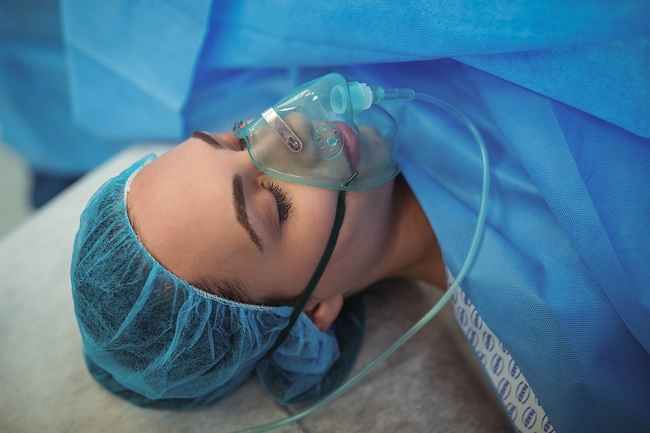Inspection ultrasound (ultrasonography) is almost always performed when pregnant women undergo a prenatal check-up with a doctor. Now there is a more sophisticated type of ultrasound, namely 3-dimensional ultrasound. This type of ultrasound is considered to have several advantages over ordinary ultrasound.
Basically, 3-dimensional (3D) ultrasound and ordinary ultrasound or two-dimensional ultrasound both use sound waves to produce images. However, 3-dimensional ultrasound uses more sophisticated machines and software, so the resulting images look more detailed and clearer.

With the images produced by 3D ultrasound, you can clearly see the shape of the face, body, organs, and feet of the fetus, including what he is doing. In medical examinations, 3D ultrasound makes it easier for doctors to detect fetal disorders that are difficult or undetectable by 2D ultrasound, such as cleft lip or birth defects.
However, the purpose of ultrasound examination 3 is no different from 2D ultrasound, namely:
- Determine gestational age.
- Detect the number of fetuses in the womb or detect multiple pregnancies.
- Evaluate fetal growth during pregnancy by monitoring fetal movement and heart rate.
- Evaluate the condition of the placenta and amniotic fluid.
- Checking the position of the baby before delivery, for example the baby's position is normal or breech.
- Detects whether there are abnormalities in the placenta, such as placenta previa and calcification of the placenta.
- Detecting an abnormal pregnancy, such as a grape pregnancy or an ectopic pregnancy (pregnancy outside the uterus).
- Look for causes of complaints during pregnancy, such as vaginal bleeding or abdominal pain.
When Can You Check With 3D Ultrasound?
The best time to perform an obstetrical examination with a three-dimensional ultrasound is when the gestational age has entered the 26th to the 30th week.
Performing a 3D ultrasound examination at less than 26 or 27 weeks of gestation may not help much to show the baby's body and face shape, because the baby has not grown big enough to be examined with a 3-dimensional ultrasound.
Although it can provide better image quality, pregnancy tests with 3D ultrasound are so far only an additional examination. This means that 3D ultrasound does not need to be used routinely for every obstetrical examination.
If there is no 3D ultrasound at the health facility where you checked your womb, the doctor can still perform a regular ultrasound to evaluate the health condition of you and the fetus in the womb. However, if you want to do a 3D ultrasound, you can consult a doctor to find out when is the best time to do it.
How does the 3D ultrasound examination procedure take place?
3D ultrasound examination process is not so different from 2D ultrasound. Initially, the doctor will ask the pregnant woman to lie down on the examination bed first. After that, the doctor will apply a special gel on the stomach of pregnant women.
When the gel has been applied, the doctor will then attach an ultrasound transducer to the abdomen. A transducer is a device that sends sound waves to the uterus and fetus so that the ultrasound machine can produce the desired image.
This procedure usually lasts only a few minutes and is painless. Just like in 2D ultrasound, patients can print and take home the results of 3D ultrasound images. The doctor will also notify the patient if any health problems are detected during the examination.
Is 3D Ultrasound Safe?
Because 3D ultrasound does not use ionizing radiation or X-rays to produce images, it is a safe procedure for pregnant women. So far, there has been no research that states that routine pregnancy ultrasound can increase the risk of health problems for pregnant women and fetuses.
However, the consideration of conducting an ultrasound examination, either a normal pregnancy ultrasound or other types of ultrasound, still needs to be based on the recommendation of the doctor conducting the examination. Without a clear medical reason and doctor's recommendation, 3D ultrasound should not be done.
4D ultrasound at a glance
In addition to 3D ultrasound, now there is also a 4D ultrasound machine. The fundamental difference between 3D ultrasound and 4D ultrasound is the resulting image. In 3D or 2D ultrasound, the resulting image is only a photo (still image). While on 4D ultrasound, you can see the fetus in video form.
Even though they have different results, both 2D, 3D, and 4D ultrasound both use sound waves to produce images of organs or fetuses in the womb.
However, the problem is, there are still not many health care facilities in Indonesia that provide the means to perform a 4D ultrasound examination, as well as a 3D ultrasound.
Even though 3D and 4D ultrasound machines are available, it does not mean that 2D ultrasound is no longer needed in obstetrical examinations. 2D ultrasound remains a part of routine obstetrical examination procedures, because the safety and accuracy of the results have been proven, as well as because the cost is more affordable.
If you want to do an ultrasound examination, be it 2D, 3D, or 4D, first consult with your obstetrician. The doctor will suggest the type of ultrasound examination that suits your needs and conditions.









